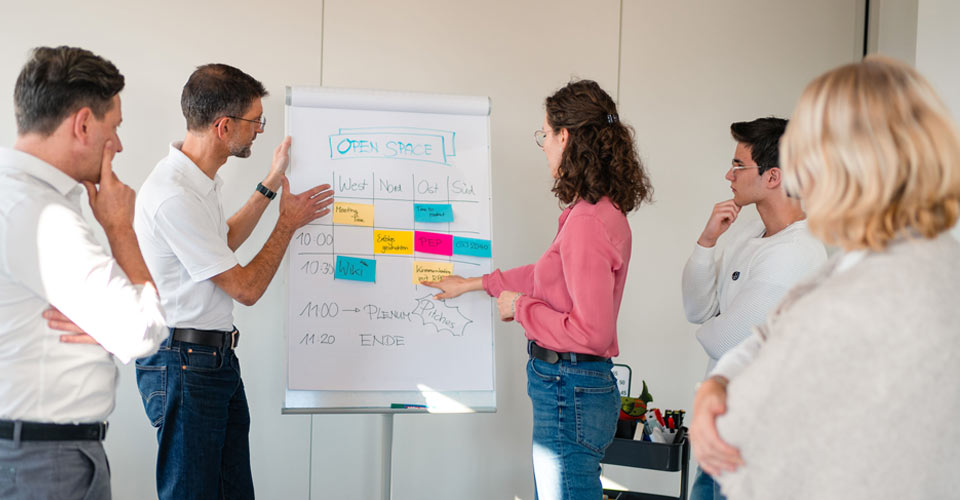Organizational Design
Connecting Structure, Processes, and Communication
Self-Organization Requires a Lot of Organization
“More results in less time—and with greater calm!”
Sounds like the fairy tale of “doing twice the work in half the time”? No, this is a direct quote from a client. Wherever people communicate, a naturally complex system emerges. Compared to this, even the most advanced high-tech machinery is considered trivial—it’s technically determined and not complex. Complexity only arises when people are involved, working on or with this product in a project. Intelligent organizational design enables barrier-free communication and provides structural support. Often, creating a safe environment alone isn’t enough. Organizational design creates the framework for open exchange among people.
Organizing Communication
Complexity can be significantly reduced when communication in development or project teams is well-organized. The effect isn’t easy to measure; no one can fully know what could have been achieved if everyone in the team had freely shared their knowledge and ideas. Managing “not knowing” also plays a role… complex indeed!
How Do You Measure “Better Communication”? Isn’t It All Relative?
The effect can be measured indirectly, such as by net meeting time. At this same client, within four weeks, we reduced meeting times by 60%, even though we covered more content with more calm and enjoyment. In another team, we wrapped up all topics within 30 minutes, even though an hour had been planned. Everyone felt they had achieved more and, unlike in the past, all questions were answered.
It’s Often About Patterns
An upward spiral—better results are achieved with more enjoyment, trust, and safety, enabling teams to tackle more complex tasks. Organizational design creates the space where effective communication can thrive.
Attitude and Values as the Basis for Efficient Work
Structure can be organized relatively easily. However, whether communication can be efficient within this structure depends much more on the underlying attitude:
– Shift from focusing on people to focusing on topics; ask, “How can we solve this?”
– Move from justifying actions to identifying obstacles and sharing insights.
– Shift from ad-hoc tasks to respecting the team’s work organization.
It’s about values like focus, transparency, and accountability—values that align closely with agile principles.

How smoothly does communication run in your teams? Are the communication channels clear or clogged with fear and politics? Are management and team working together or against each other? Does the energy dissipate before it has an impact on the product? Do you want to change this? Then book an appointment for a no-obligation discussion and together we will see what future collaboration could look like.




